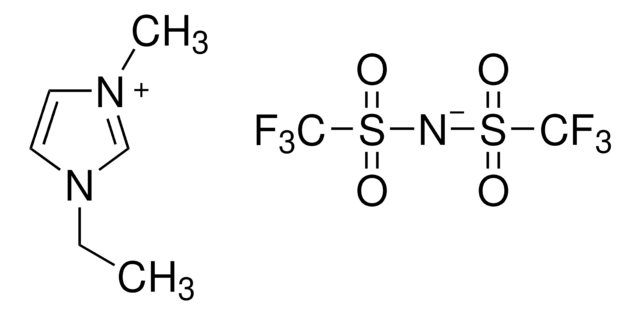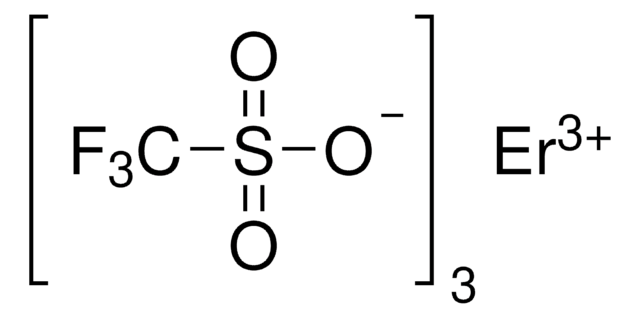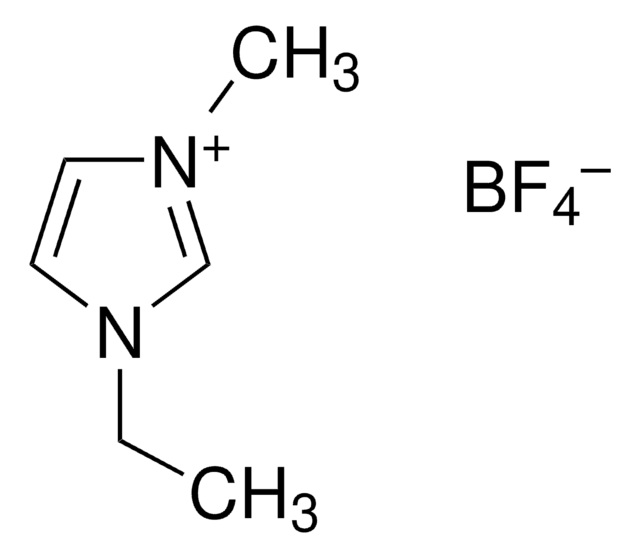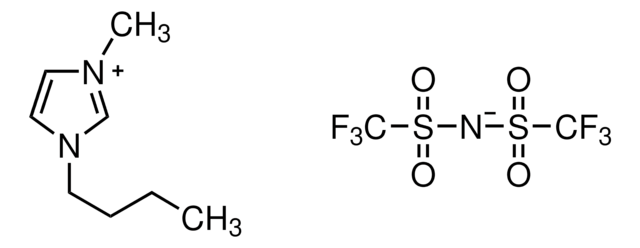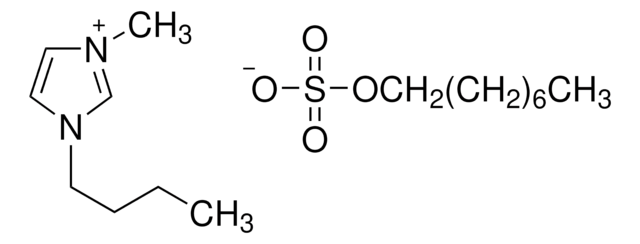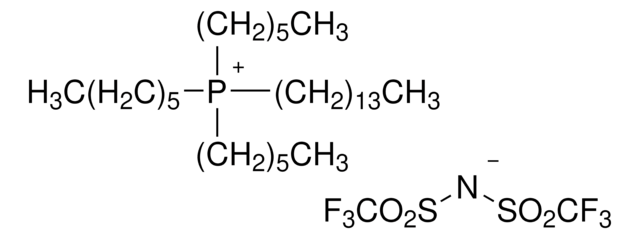14654
1-Butyl-3-methylpyridinium bis(trifluormethylsulfonyl)imide
≥97.0% (H-NMR)
Synonym(s):
BMPIm
About This Item
Recommended Products
Quality Level
assay
≥97.0% (H-NMR)
form
liquid
impurities
<0.5% water
functional group
fluoro
SMILES string
CCCC[n+]1cccc(C)c1.FC(F)(F)S(=O)(=O)[N-]S(=O)(=O)C(F)(F)F
InChI
1S/C10H16N.C2F6NO4S2/c1-3-4-7-11-8-5-6-10(2)9-11;3-1(4,5)14(10,11)9-15(12,13)2(6,7)8/h5-6,8-9H,3-4,7H2,1-2H3;/q+1;-1
InChI key
NOFBAVDIGCEKOQ-UHFFFAOYSA-N
Application
- In the modification of electrodes applicable in the detection of dopamine and uric acid in the human urine sample.
- As a solvent in the Ullmann homocoupling of aryl halides or aryl boronic acids using Cu nanoparticles.
- To modify the carbon paste electrode applicable in the detection of dopamine in human serum and urine samples.
Physical form
Legal Information
signalword
Warning
hcodes
Hazard Classifications
Eye Irrit. 2 - Skin Irrit. 2 - STOT SE 3
target_organs
Respiratory system
Storage Class
11 - Combustible Solids
wgk_germany
WGK 3
flash_point_f
Not applicable
flash_point_c
Not applicable
ppe
dust mask type N95 (US), Eyeshields, Gloves
Choose from one of the most recent versions:
Already Own This Product?
Find documentation for the products that you have recently purchased in the Document Library.
Customers Also Viewed
Articles
Over the past decade, Ionic Liquids have attracted much interest for their use as non-aqueous electrolytes in electrochemical applications. In this context, their conductivity as well as their electrochemical stability are the most important physical properties.
Our team of scientists has experience in all areas of research including Life Science, Material Science, Chemical Synthesis, Chromatography, Analytical and many others.
Contact Technical Service